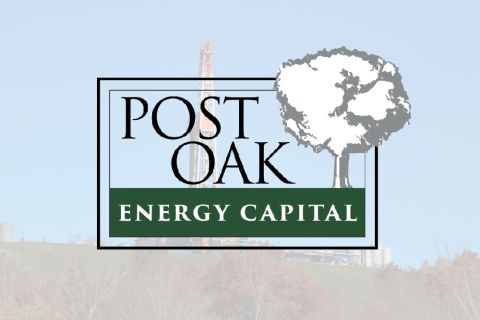For decades, the Silurian Hunton has been an intriguing E&P target in the deep Anadarko Basin. The first deep Hunton discovery in the Texas Panhandle was Gageby Creek Field, found in 1966 by Phillips Petroleum in Wheeler County. In 1972, Freeport Oil Co. found Mills Ranch Field, which has produced more than 350 billion cubic feet (Bcf) of gas to date. A succession of 100-Bcf-plus discoveries quickly followed, and the play spread from Wheeler into Hemphill County, Texas. All told, some 2.7 trillion cubic feet of gas equivalent has been produced from deep Hunton fields in the western Anadarko Basin, including those in neighboring Beckham County, Oklahoma. Today, the deep Hunton play is a focus area for Austin-based independent Brigham Exploration. The company started working the area a decade ago, shooting some of the Panhandle's early 3-D seismic surveys. "We have several explorationists on our staff with more than 20 years of experience in the play," says Bud Brigham, chairman, president and chief executive. "Success in the deep Hunton requires a great deal of geophysical, geological and operational expertise." During the past 10 years, the application of 3-D seismic, with its superior imaging capabilities, has improved success rates in the risky, high-cost play. "3-D seismic is not perfect by any means," he says, "but when we worked the play with 2-D in the 1980s, the imaging of the steeply dipping events at depth was extremely poor. 3-D seismic has improved imaging to the point that we now have a fuzzy picture of the deep section." Brigham has acquired more than 750 square miles of 3-D data that basically blanket the trend. Certainly, today's seismic gives prospectors the opportunity to find some of the smaller accumulations that were missed on 2-D data, he notes. "It also gives us the ability to identify some of the larger, more complex accumulations in the mountain-front region that the 2-D data could not effectively image." Indeed, 100-Bcf-equivalent-plus accumulations can still be found in the play, he believes. The independent made a significant discovery in 2000 in its Wildcat project in Wheeler County. The Mills Ranch #1 was an offset to a lone producing Hunton well in Fuller Deep Field. Brigham successfully reentered a dry hole drilled in the early 1980s, sidetracking out at 15,000 feet and directionally drilling some 3,000 feet to a depth of approximately 25,000 feet. By reentering an existing well, Brigham reduced its drilling and completion costs by roughly $1.5 million to less than $5 million. The company encountered 1,200 feet of gross gas pay and tied the well into sales at a rate of 9.5 million cubic feet of gas and 90 barrels of condensate per day. Currently, Brigham has three producing wells in the area-two Hunton completions and a shallower Granite Wash completion. In February 2004, Brigham started work on its Mills Ranch #1-99S, another reentry and sidetrack of an existing well. The location lies several miles east of its #1 and #2 Mills Ranch wells, which sit on the west side of the large Hunton structure. The well was still in progress at press time, but results should be announced shortly. In Brigham's Mills Ranch area, a 22,000- to 25,000-foot Hunton well takes seven months to drill and costs around $8 million. Brigham estimates that the four wells it has drilled in recent years have generated average recoverable reserves of about 8 Bcf equivalent per well. The economics are quite strong: a well can pay out in less than two years, and Brigham's recent finding costs have averaged approximately $1 per thousand cubic feet. Nonetheless, operations are difficult. Considerable drilling and completion problems can be encountered, given the extreme depth of the wells, and cost overruns are a constant concern. Finding the structures is only the first step of a successful program; keeping the well costs at reasonable levels is a noteworthy challenge. For the near future, Brigham plans to keep its deep rig busy. It will spud another well after the #1-99S is completed, and continue drilling a mix of development and exploratory wells. The company may even add a second rig next year to accelerate its Hunton program. "The Hunton play is special in that it offers a very high reserve potential, on both a per-field and per-well basis, with reserve life approaching 20 years," says Brigham. "There are not many domestic plays that offer that combination."
Recommended Reading
ONEOK Replaces Three EnLink Board Directors Post Acquisition Close
2024-10-16 - Three Global Infrastructure Partner directors are being replaced on EnLink Midstream’s board of directors by members of ONEOK’s executive leadership team.
Post Oak Backs Third E&P: Tiburon Captures Liquids-rich Utica Deal
2024-10-15 - Since September, Post Oak Energy Capital has backed new portfolio companies in the Permian Basin and Haynesville Shale and made an equity commitment to Utica Shale E&P Tiburon Oil & Gas Partners.
Exclusive: How E&Ps Yearning Capital can Stand Out to Family Offices
2024-10-15 - 3P Energy Capital’s Founder and Managing Partner Christina Kitchens shares insight on the “educational process” of operators looking at opportunities in the U.S. and how E&Ps looking for capital can interest family offices, in this Hart Energy Exclusive interview.
J.P. Morgan, Capital One Commit $260MM to Arizona Solar Project
2024-10-15 - Arizona’s Box Canyon solar project secured a $260 million tax-equity financing commitment from Capital One and an affiliate of J.P. Morgan.
Dividends Declared (Sept. 30 - Oct. 11, 2024)
2024-10-11 - Here is a compilation of dividends and distributions declared from select upstream, midstream and service and supply companies from Sept. 30 to Oct. 11.
Comments
Add new comment
This conversation is moderated according to Hart Energy community rules. Please read the rules before joining the discussion. If you’re experiencing any technical problems, please contact our customer care team.





